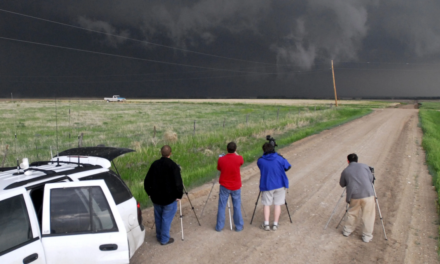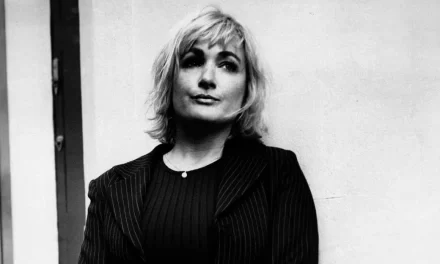Disclaimer: This blog post is derived from the research presented at the 9th International Visual Methods Conference, at Istanbul, Turkey.
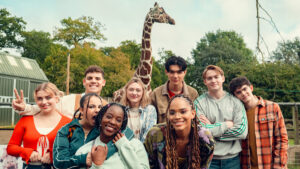
Fig. 1: Authenticity Casting Strategy Seems Main Reason Behind Heartstopper‘s Success
Despite notable increases in LGBTQ+ representation across streaming platforms, narratives centred on queer adolescence remain frequently dominated by trauma-centric tropes that prioritise crisis and suffering over authenticity and multifaceted experience (Kashyap, 2024). Netflix’s Heartstopper (2022–2025), adapted from Alice Oseman’s webcomic and graphic novels, emerges as a significant counterpoint. It offers viewers a fresh, optimistic portrayal of queer teenagehood, foregrounding intimacy, consent, and joy. This analysis explores the specific narrational strategies and aesthetic choices through which Heartstopper subverts pejorative tropes, crafting an authentic panorama of queer experiences and envisioning alternative queer futurities.
Television history reveals a persistent reliance on limiting and often harmful tropes for queer teen characters. These range from stereotypes like “All Gays Love Arts” and “Apologises A Lot” (reflecting internalised shame), to plot devices like “Forced Out of the Closet,” “Gaynst” (misery attributed to sexuality or societal attitudes), and “Gay Guy Seeks Popular Jock” (Kashyap, 2024; Sproull, 2023). While shows like My So-Called Life (Rickie Vasquez), Glee (Kurt Hummel), and Love, Victor offered steps towards representation, they often still navigated within or reinforced these problematic frameworks, focusing heavily on coming-out trauma, bullying, and parental rejection. Heartstopper consciously positions itself against this legacy.
The series resonates with key theoretical concepts challenging normative narratives. Eve Kosofsky Sedgwick’s distinction between paranoid and reparative reading modes provides a lens for its affirmative approach. José Esteban Muñoz’s concept of “queer futurity” – the insistence on a future for queer lives beyond the present’s constraints – underpins its hopeful outlook (Muñoz, 2019). Furthermore, Rosi Braidotti’s “ethics of joy” and Jack Halberstam’s “queer temporality” inform its celebration of queer affection and its rejection of linear, heteronormative life scripts (Braidotti, 2018). The series problematize Anthony Giddens’ “pure relationship,” built on intimacy and communication, particularly through Nick and Charlie’s evolving bond.

Fig. 2: Charlie Spring and Nicholas Nelson, at High-School Prom.
Heartstopper employs distinct cinematic narrative techniques to foster intimacy and subvert expectations:
(1) Restricted & Subjective Narration: The narrative perspective is tightly aligned with Charlie’s and Nick’s subjective experiences, utilizing internal focalization (Genette/Chatman). This immerses viewers in their emotional worlds – anxiety, burgeoning attraction, joy – through techniques like mental maps depicting thoughts and overwhelming emotions, and close-ups capturing micro-expressions.
(2) Slow-Burn Narrative: Gregroy Mohr’s concept of “micro-escalations” defines the pacing. Relationships develop through small, meaningful gestures (accidental touches, lingering glances, supportive texts) rather than grand dramatic events, building emotional resonance and extended, authentic uncertainty (Opie, 2023).
(3) Visual Pacing & Elements: The show incorporates the graphic novel’s visual language: animated leaves, sparks, and cardiovascular motifs externalize internal states of love and excitement. Slow-motion highlights moments of profound intimacy (hugs, kisses), while split screens effectively convey parallel experiences and digital communication (texting, calls).
(4) Episodic Closure through Affirmation: Eschewing traditional plot resolution or heightened drama, episodes often conclude with moments of emotional affirmation, safety, or connection between characters (e.g., a hug, a supportive conversation, a shared smile), reinforcing the reparative ethos.
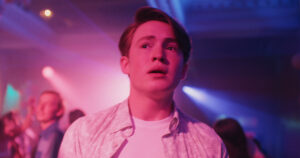
Fig. 3: Nicholas Nelson Portrayed Under Bi+ Community Color Shades.
The show’s visual aesthetics actively contribute to its queer joy:
(1) Symbolic Lighting and Colour: Nick is frequently framed in “bi-lighting” (blues and pinks), while characters like Charlie, Tara, and Darcy are associated with rainbow hues, visually coding their identities subtly but consistently.
(2) Homosocial Spaces Queered: Homosocial spaces like the all-boys Truham Grammar, the rugby field, and locker rooms are depicted as sites where queer desire and connection can emerge and flourish, challenging their heteronormative associations.
(3) Alexander Doty’s Queer Moments: The series elevates subtle gestures laden with queer significance: accidental hand-holds (Nick/Charlie), hugs framed as powerful “intimate weapons” against pain (Opie, 2023), tender touches to face and hair, and prolonged, meaningful gazes that communicate unspoken understanding and desire,
(4) Yaoi Genre Influence: The narrative structure draws from Yaoi (“Boys’ Love”) conventions like the “Yamanashi, Ochinashi, Iminashi” arc (no climax, no ending, no meaning), focusing on the emotional journey rather than a singular dramatic peak, while also subtly playing with and subverting traditional “Seme” (top) and “Uke” (bottom) dynamics.
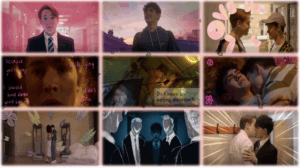
Fig. 4: Graphic Novel Elements Used For Queering Visual Language of Heartstopper
Heartstopper actively engages with established tropes, often inverting or subverting them:
(1) Bi-Wildered: Nick’s journey from perceived “popular straight boy” to confident bisexual identity replaces confusion with a positive exploration.
(2) Closet Key: While Charlie helps Nick explore his identity, it’s framed as supportive discovery, not forced outing. Tara similarly supports Darcy.
(3) Gay Guy Seeks Popular Jock: While Charlie (openly gay) is drawn to Nick (initially perceived as straight/jock), the trope is dismantled through Nick’s authentic bisexuality, mutual respect, and the relationship’s healthy development, avoiding predatory or fetishistic overtones.
(4) Mentor in Queerness: Support exists (Tara/Charlie for Nick, Mr. Ajayi for Mr. Farouk), but it’s reciprocal and community-based, not reliant on a single, often tokenised, older figure.
(5) “I Love You” Stigma: The expression of love between Nick and Charlie is a moment of profound, unashamed connection, devoid of fear or stigma.
(6) Reasonable Authority Figures: Positive adult figures like Mr. Ajayi, Coach Singh, and even the evolving Mr. Farouk offer crucial support, countering narratives of universally hostile authority.
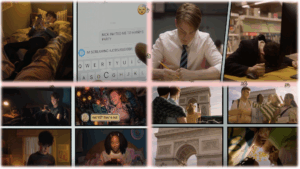
Fig. 5: Effective Use of Split Screen for Diversity of Queer Folks’ Experiences.
Scholars and critics note a relative lack of intersectional transgender experiences and inner transphobic moments (Zaza, 2024), the potential reinforcement of “Puriteen” culture (avoiding overt sexuality, especially in Season 2), “coming out fatigue,” underrepresentation of complex queer adult lives (Greig), and the problematic simplicity of the “Ben is Evil” trope (Sproull, 2023; JD Tevin). Criticisms regarding dialogue inauthenticity and the real-world controversy surrounding Kit Connor’s forced coming-out highlight ongoing tensions in queer media production and reception.
Heartstopper‘s revolutionary impact lies in its centring of queer joy, intimacy, and authentic connection as forms of resistance against the pervasive trauma narrative. Through its innovative narrational strategies – restricted subjective narration, slow-burn pacing, reparative visual language – and conscious subversion of harmful tropes, it constructs a “concrete utopia” (Bloch) in the present. Its commitment to authentic casting (“Queer Character, Queer Actor”) further strengthens its claim to authenticity. As actor Sebastian Croft noted, it transcends being labelled solely an “LGBTQ+ show”; it depicts “young, happy people falling in love”. In doing so, Heartstopper leverages intimacy and optimism not as naivety, but as a powerful political and aesthetic strategy, offering a reparative vision of queer life that prioritises hope, futurity (Muñoz, 2019), and the radical potential of everyday joy (Braidotti, 2018). It represents a significant shift towards storytelling where queer adolescence is defined not by crisis alone, but by the full, vibrant spectrum of human connection and becoming.
__________________________________________________________________________________________________
Enes Akdağ is an Istanbul-based filmmaker and a Ph.D. candidate in Communication Studies at Kadir Has University. He holds an M.A. in Media and Communication Studies and a B.A. in Political Science and International Relations. His up-to-date research interests lie in the fields of film industries, new cinema history, queer cinema. He recently joined the New Media and Communication Department of Üsküdar University as a research assistant.
REFERENCES
Braidotti, R. (2018) ‘Joy, ethics of’. In: Braidotti, R. and Hlavajova, M. (eds.) Posthuman glossary. London: Bloomsbury Academic, pp. 221–223.
Donini, A. (2022). Heartstopper: A queer love warming everyone’s heart. Hypercritic. Available at: https://hypercritic.org/collection/alice-oseman-heartstopper-a-queer-love-warming-everyones-heart-2022-review
Doty, A. (1993) Making Things Perfectly Queer: Interpreting Mass Culture. Minneapolis: University of Minnesota Press.
Green, A.I. (2002) ‘Gay but Not Queer: Toward A Post‑Queer Study of Sexuality’, Theory and Society, 31(4), pp. 521–545. Available at: http://www.jstor.org/stable/3108514
Jiménez González, S. (2023) An Analysis of Nick Nelson’s Portrayal in Heartstopper (2022–): A Study in Character Development and LGBTQ+ Representation. [Master’s thesis, Universitat de les Illes Balears]. Available at: https://dspace.uib.es/xmlui/bitstream/handle/11201/165285/Jimenez_Gonzalez_Sonia.pdf?sequence=1&isAllowed=y
Kashyap, A. (2024) Heartstopper and Queer Representation in TV and Media, University of California, Irvine New University, 29 October. Available at: https://newuniversity.org/2024/10/29/heartstopper-and-queer-representation-in-tv-and-media/
Muñoz, J.E. (2019) Cruising Utopia: The Then and There of Queer Futurity (10th anniversary ed.). New York: New York University Press.
Opie, D. (2023) Heartstopper’s secret weapon is hugs. Gay Times, 3 August. Available at: https://www.gaytimes.com/culture/heartstoppers-secret-weapon-is-hugs/
Sproull, P.. (2023) Netflix’s Heartstopper is A Sweet, Queer Coming‑of‑Age Drama That Perhaps Avoids Messy Authenticity, The Independent, 4 August. Available at: https://www.independent.co.uk/arts-entertainment/tv/features/heartstopper-netflix-sex-lgbt-nick-charlie-b2386419.html
Veenhuijsen, J. (2024) Queer Joy as A Pedagogical Tool in The Heartstopper TV Series. Raffia Magazine, 6 September. Available at: https://raffia-magazine.com/2024/09/06/queer-joy-as-a-pedagogical-tool-in-the-heartstopper-tv-series/
Zazza, J. (2024) Lack of Intersectional Transgender Experiences in Heartstopper the Statesman, 4 April. Available at: https://sbstatesman.com/126419/arts/lack-of-intersectional-transgender-experiences-in-heartstopper/


